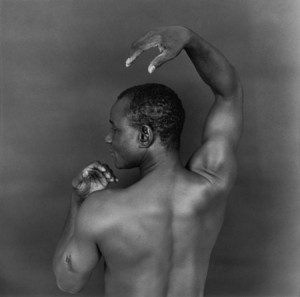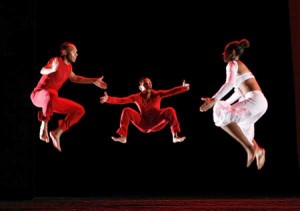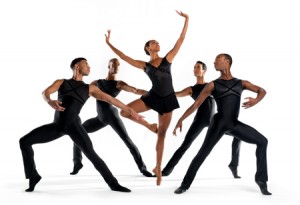CFA Arts Administration Intern Chloe Jones ’15 talks to University Professor of Music and Director of the Electronic Music and Recording Studios Ronald Kuivila and Assistant Professor of Music Paula Matthusen about the conference of the Society for Electro-Acoustic Music in the United States, taking place at Wesleyan University from Thursday, March 27 through Saturday, March 29, 2014.
Experimental music composer Alvin Lucier first performed at Wesleyan in 1968, just one year before the release of his groundbreaking and world-famous sound installation, I Am Sitting in a Room. He was teaching at Brandeis University at the time, but came to Wesleyan after a group of students requested to take a class in electronic music. The class was a roaring success, and Mr. Lucier was hired to launch an electronic music program at Wesleyan.
More than four decades later, the electronic music scene on campus is alive and well, and this year Wesleyan hosts the 29th National Conference for the Society for Electro-Acoustic Music in the United States (SEAMUS), co-hosted by University Professor of Music and Director of the Electronic Music and Recording Studios Ronald Kuivila and Assistant Professor of Music Paula Matthusen. Over 130 people are expected to gather from the U.S. and abroad and join the Wesleyan and regional community for this important series of performances, installations, talks, and workshops. [The SEAMUS conference is being held in New England for the first time since 1998.]
The term “electro-acoustic” refers to music that depends on electronic technology for its creation and/or performance. “Electronic technology” encompasses everything from hemispherical speakers to 3D video projection, custom software to the average laptop.
That’s not to say electro-acoustic music is all high-tech. Ordinary objects frequently make their way into the musical compositions, concerts, and sound installations. Case in point: one installation work featured at this year’s SEAMUS conference, Urban Legend [by Jenny Johnson, as part of David Tudor’s Rainforest in Zelnick Pavilion], invites visitors to combine Pop Rocks candy with carbonated soda water, and then captures the sounds of the resulting chemical reaction with a small hydrophone. Rainforest will create a chorus of loudspeakers out of found objects in an immersive sound installation that melds the ordinary with the extraordinary. [Other contributors to Rainforest include Paula Matthusen, Nestor Prieto MA’14, Phil Edelstein, John Driscoll, Nayla Mehdi, Stephan Moore, Jim Moses, Doug Repetto, Jeff Snyder, and Suzanne Thorpe.]
In the upper lobby of Fayerweather Beckham Hall, the audio installation SC Tweet [by Charles Hutchins MA’05] draws information from incoming tweets [tagged with #sc140 and that contain executable code] to program elaborate musical scores.
And taking place in a public parking garage in Middletown [the Middle Oak Parking Garage at 213 Court Street], The Non-aggressive Music Deterrent will replace the light classical music that usually plays in the garage with a whole array of original electro-acoustic compositions [from Friday, March 27 at 5pm to Sunday, March 29, 2014 at 12am; contributors to The Non-aggressive Music Deterrent include Benjamin Zucker ’15, Jason Bolte, Julius Bucsis, Caroline Park, A. Campbell Payne, Sean Peuquet, Margaret Schedel, and Juan Solare.]
It’s this fusion of high-tech and low-tech that makes the field of electro-acoustic music so compelling and innovative. “There’s a fine tradition of doing things like circuit building and hacking, in which you take found objects and reconfigure them,” explains Mr. Kuivila. “It’s an approach to electro-acoustic music that dovetails with our daily experience, in that you take something familiar and redefine it so that it becomes new.”
Electro-acoustic music transforms an empty film canister into a loudspeaker, or a cigar box into the body of a new instrument. It can also transform space, an idea that has greatly influenced Mr. Kuivila and Ms. Matthusen’s vision for this year’s SEAMUS conference.

In addition to the five daily concerts [for a total of fifteen concerts across the three days], the ongoing installations, four workshops, three paper sessions, and two listening rooms, there are a number of special events revolving around issues of space.
“We wanted to come up with ways to engage with the social dimension of spatiality,” says Mr. Kuivila.
One event that poses questions about space is Rock’s Role (After Ryoanji), which draws its inspiration from a series of pieces composed by John Cage. Rock’s Role (After Ryoanji) is comprised of soundworks that embrace sound leakage and overlap – the inescapable infiltration of sound into space. Each soundwork is intended to coexist with the other soundworks in the space [the lower level of World Music Hall; soundworks for Rock’s Role (After Ryoanji) contributed by Mara Helmuth, Jason Malli, Maggi Payne, A. Campbell Payne, and Adam Vidiksis.]
From the Memorial Chapel to the underground tunnels of the Center for the Arts, SEAMUS is taking the campus by storm and by sound. “You will hear a lot of different things,” says Mr. Kuivila. “It’s a smorgasbord of sorts.”
The SEAMUS conference represents an exciting moment for the Wesleyan Music Department and the regional community, bringing to campus many world leaders in the field of electro-acoustic music. For more information, as well as a detailed listing of events, please visit the conference website.
SEAMUS Concert #9
Friday, March 28, 2014 at 8pm
Crowell Concert Hall, 50 Wyllys Avenue, Middletown
Tickets: $8 general public; $6 senior citizens, Wesleyan faculty/staff, non-Wesleyan students; $5 Wesleyan students
Concert #9 will feature Meditation on Pattern and Noise, a multi-modal exploration of communication and disruption, with music and language by vocalist Jonathan Zorn ’02 MA ’07. This concert will also include guitarist Bryan Jacobs performing his Syncro-Vox and Other Cheap Animation Techniques with Natacha Diels on alto flute (reading the music off a scrolling score on a computer display); pianist Kari Johnson performing time, forward by Chin Ting Chan (with fixed sample playbacks and live processing techniques), as well as Leander’s Swim by Sam Wells (with live electronics, inspired by Cy Twombley‘s painting Hero and Leandro, Part I); pianist Shiau-uen Ding performing Composition for S#!++\/ Piano with Drum Samples, Concrete Sounds, and Processing by Christopher Bailey (a percussive piece full of funky rhythms, joyous chaos, and cacophony); Motions of Maria Makiling for four-channel fixed media by Deovides Reyes III (depicting the bodily movements of the mythical Filipino character); and cellist Jason Calloway performing Vanished into the Clouds by Jacob David Sudol (with live electronics, titled from a chapter in the Japanese novel The Tale of Genji).
SEAMUS Concert #14
Saturday, March 29, 2014 at 8pm
Crowell Concert Hall, 50 Wyllys Avenue, Middletown
Tickets: $8 general public; $6 senior citizens, Wesleyan faculty/staff, non-Wesleyan students; $5 Wesleyan students
Concert #14 will feature pianist Kathleen Supové (pictured above) performing Sonata for Piano and Tape by Todd Kitchen (based on the melody from the chorale Christ lag in Todesbanden), as well as two movements from Metal Works for piano and electronics by Nina Young (a suite of pieces inspired by scientific, poetic, and historic concepts of metal). Ms. Young is the first prize 2013 ASCAP/SEAMUS Commission Winner.
The concert will also feature the final movement of The Chamber of False Things, from The Barnum Museum (2009–2012) for fixed media by Barry Schrader (an electronic tone poem based on a short story by Steven Millhauser). The winner of the 2014 SEAMUS Award, Mr. Schrader is a founder and the first president of SEAMUS, described by Gramophone as a composer of “approachable electronic music with a distinctive individual voice to reward the adventurous.”
This concert will also include Hephaestus’ Fire: Music for Anvil and Electronics by Paul Leary (named after the Greek god of blacksmithing, metallurgy, and volcanoes, and performed with keyboards, foot pedals, a gaming joystick, an anvil, various hammers, and industrial metals); Z-77 for paper and computer by Jennifer Hill (an interpretation of Richard Wagner’s “gesamtkunstwerk” performed along with Ryan Fellhauer); and N’air sur le lit, a collaboration by pianist Jon Appleton and vocalist Paul J. Botelho with fixed media.




